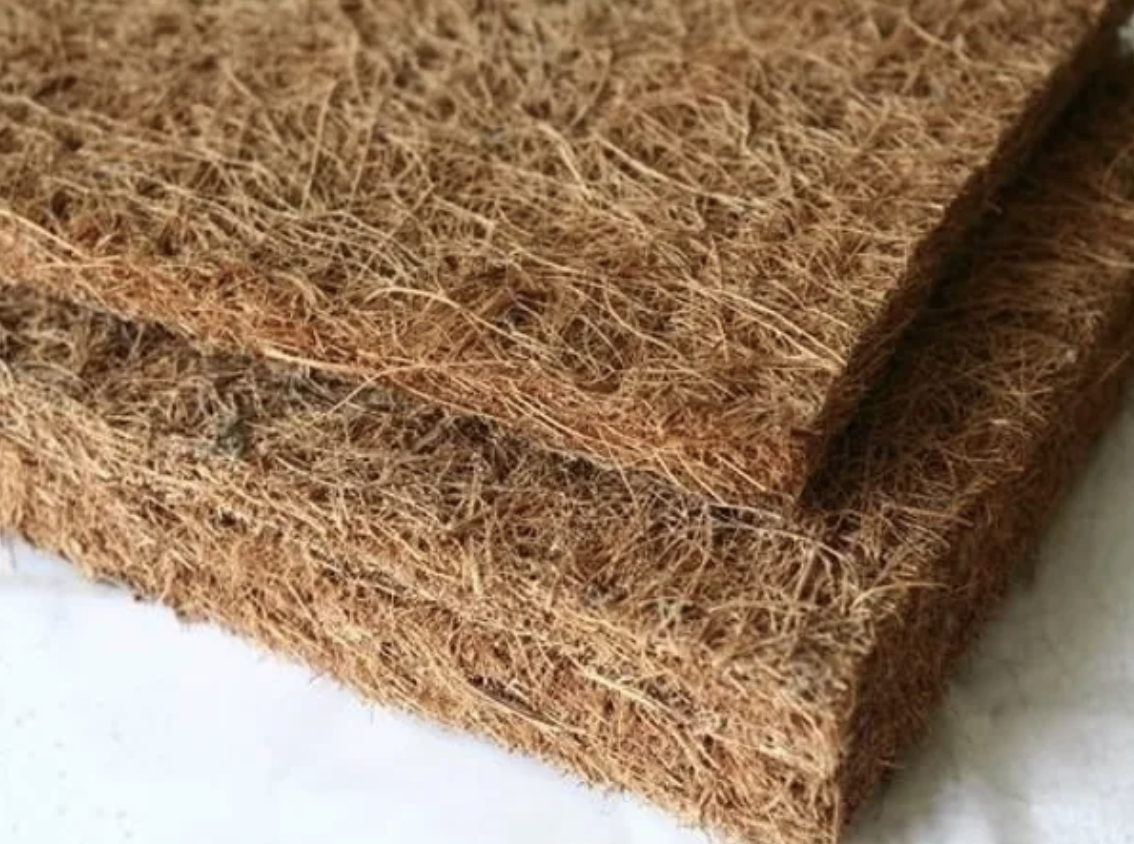Sustainable Alternatives to Foam in Upholstery: Exploring Eco-Friendly Options
In recent years, the demand for sustainable, eco-friendly materials has grown, especially in the furniture and upholstery industry. Traditional upholstery foams, such as polyurethane and memory foam, are made from petrochemical-based materials that are not biodegradable and often have a significant environmental footprint. For those looking to make environmentally conscious choices, it’s essential to explore alternatives to traditional foam that offer comfort, durability, and sustainability. Fortunately, several innovative and sustainable options are now available, including products like Springboard UltraFlex and other natural materials. Let’s dive into these eco-friendly alternatives and how they can replace conventional foams in upholstery projects.
The Environmental Impact of Traditional Foam
Before exploring alternatives, it's important to understand why traditional foam is not the most sustainable option. Conventional polyurethane foam, the most widely used in upholstery, is derived from petroleum, a non-renewable resource. The production of these foams involves toxic chemicals, including isocyanates and flame retardants, which contribute to air pollution and have potential health risks for both workers and consumers. Additionally, foam has a limited lifespan and, once discarded, takes hundreds of years to decompose in landfills.
Given these environmental concerns, many designers, manufacturers, and consumers are turning to more sustainable alternatives.
1. Springboard UltraFlex
One of the most exciting innovations in eco-friendly upholstery is Springboard UltraFlex, a sustainable, highly resilient seating material that combines comfort, durability, and environmental responsibility.
What is it? Springboard UltraFlex is a flexible, spring-based cushioning material that eliminates the need for traditional foam. It uses a system of metal springs encased in a fiber structure to provide support and comfort, making it a viable alternative for sofas, chairs, and other upholstered furniture.
Why is it sustainable? UltraFlex is considered a sustainable option because it uses fewer synthetic materials and offers superior longevity compared to foam. The spring structure can be recycled at the end of its life, reducing waste. Additionally, it doesn't rely on the chemical-heavy production processes associated with traditional foam, making it a cleaner option from the manufacturing stage to disposal.
Advantages:
Long-lasting durability: Springboard UltraFlex maintains its structure and support for many years, reducing the need for frequent replacements.
Recyclability: The metal springs used in UltraFlex are easily recyclable, contributing to a circular economy.
Reduced chemicals: Unlike foam, which can off-gas harmful chemicals, UltraFlex is a safer, more environmentally friendly alternative.
Superior comfort: The flexible spring system provides excellent support and comfort, making it a functional replacement for foam cushions.
2. Natural Latex Foam
Natural latex foam is another sustainable alternative that is gaining popularity for upholstery applications. Made from the sap of rubber trees, it offers a biodegradable, renewable, and eco-friendly option compared to traditional polyurethane or memory foam.
Why is it sustainable? Natural latex is harvested from rubber trees, a renewable resource. The trees are not cut down to collect the sap, making latex production a sustainable process. Additionally, natural latex foam is biodegradable, meaning it will decompose over time, reducing landfill waste.
Advantages:
Durability: Latex foam is highly durable and maintains its shape over time, reducing the need for frequent replacement.
Natural material: It is made from renewable resources and does not involve toxic chemicals or off-gassing, making it safer for indoor air quality.
Hypoallergenic: Natural latex foam is naturally resistant to dust mites, mold, and mildew, making it ideal for those with allergies.
Comfort: Latex foam offers excellent support and comfort with a slightly firmer feel compared to polyurethane foam.
3. Coconut Coir
Coconut coir, the fiber extracted from the husk of coconuts, is an innovative, sustainable material that can be used in place of foam in upholstery projects. Coir is durable, biodegradable, and readily available, making it an eco-friendly choice for furniture cushioning.
Why is it sustainable? Coconut coir is a byproduct of the coconut industry, making it a naturally renewable and biodegradable resource. It requires minimal processing and no harmful chemicals during production.
Advantages:
Natural and renewable: Coir comes from coconuts, a widely grown and renewable resource, which helps reduce the environmental impact of harvesting.
Breathability: Coir has excellent ventilation properties, preventing moisture buildup and reducing the risk of mold.
Durability: Coir is very resilient and can maintain its structure even with regular use, making it a long-lasting alternative to foam.
Biodegradability: At the end of its life, coir decomposes naturally, making it a zero-waste option.
4. Wool Batting
Wool batting, made from natural sheep’s wool, has been used for centuries as a filling material for cushions and mattresses. It's now being rediscovered as a sustainable alternative to foam in upholstery projects.
Why is it sustainable? Wool is a renewable resource that naturally regrows each year. It is biodegradable and requires less energy-intensive processing compared to synthetic foams. Additionally, wool is naturally flame-resistant, eliminating the need for toxic flame retardants that are often added to foam.
Advantages:
Temperature regulation: Wool is a natural insulator, providing warmth in winter and keeping cool in summer.
Flame resistance: Wool naturally resists fire, which makes it a safer alternative without the need for added chemicals.
Hypoallergenic: Wool is resistant to dust mites and mold, making it an ideal choice for allergy sufferers.
Durability: Wool batting is resilient and maintains its loft and comfort over time, making it a durable option for upholstery.
5. Recycled PET Fiber
Recycled PET fiber is another innovative option that turns plastic waste, such as plastic bottles, into useful upholstery materials. This fiber is often used in cushion fillings and provides a sustainable alternative to foam.
Why is it sustainable? Recycled PET fiber repurposes plastic waste, helping to reduce the amount of plastic that ends up in landfills or oceans. It gives new life to materials that would otherwise contribute to environmental degradation.
Advantages:
Eco-friendly: Using recycled materials reduces the demand for new plastic and helps mitigate plastic pollution.
Durable: Recycled PET fibers are strong and durable, offering long-lasting support for cushions.
Affordable: PET fiber is often more affordable than natural alternatives while still providing a sustainable option.
Hypoallergenic: PET fiber is naturally resistant to allergens, making it a suitable option for those sensitive to dust or mold.
6. Bio-Foam
Bio-foam is an emerging alternative to traditional polyurethane foam, made from plant-based materials such as soybean oil, castor oil, or corn starch. It offers a more sustainable option while maintaining the characteristics of conventional foam.
Why is it sustainable? Bio-foam is made from renewable, plant-based materials rather than petroleum, reducing reliance on non-renewable resources. While bio-foam still contains some synthetic elements, it reduces the overall environmental impact of foam production.
Advantages:
Lower carbon footprint: Bio-foam production generates fewer carbon emissions compared to traditional petroleum-based foams.
Similar performance to foam: Bio-foam retains many of the qualities of conventional foam, such as comfort and support, but with a greener production process.
Non-toxic: Bio-foam typically contains fewer harmful chemicals, making it a safer alternative for indoor environments.
If you’re looking to make your upholstery project more sustainable, there are plenty of eco-friendly alternatives to traditional foam. From innovative options like Springboard UltraFlex, which uses a recyclable spring-based system, to natural materials like wool, coconut coir, and latex, the market offers a range of sustainable choices. Each material has its unique advantages in terms of durability, comfort, and environmental impact.
By choosing eco-friendly alternatives, you can create beautiful, long-lasting furniture while reducing your carbon footprint and contributing to a more sustainable future. Whether you’re upholstering a chair, sofa, or custom cushion, these sustainable materials offer a great combination of comfort, durability, and environmental responsibility.





